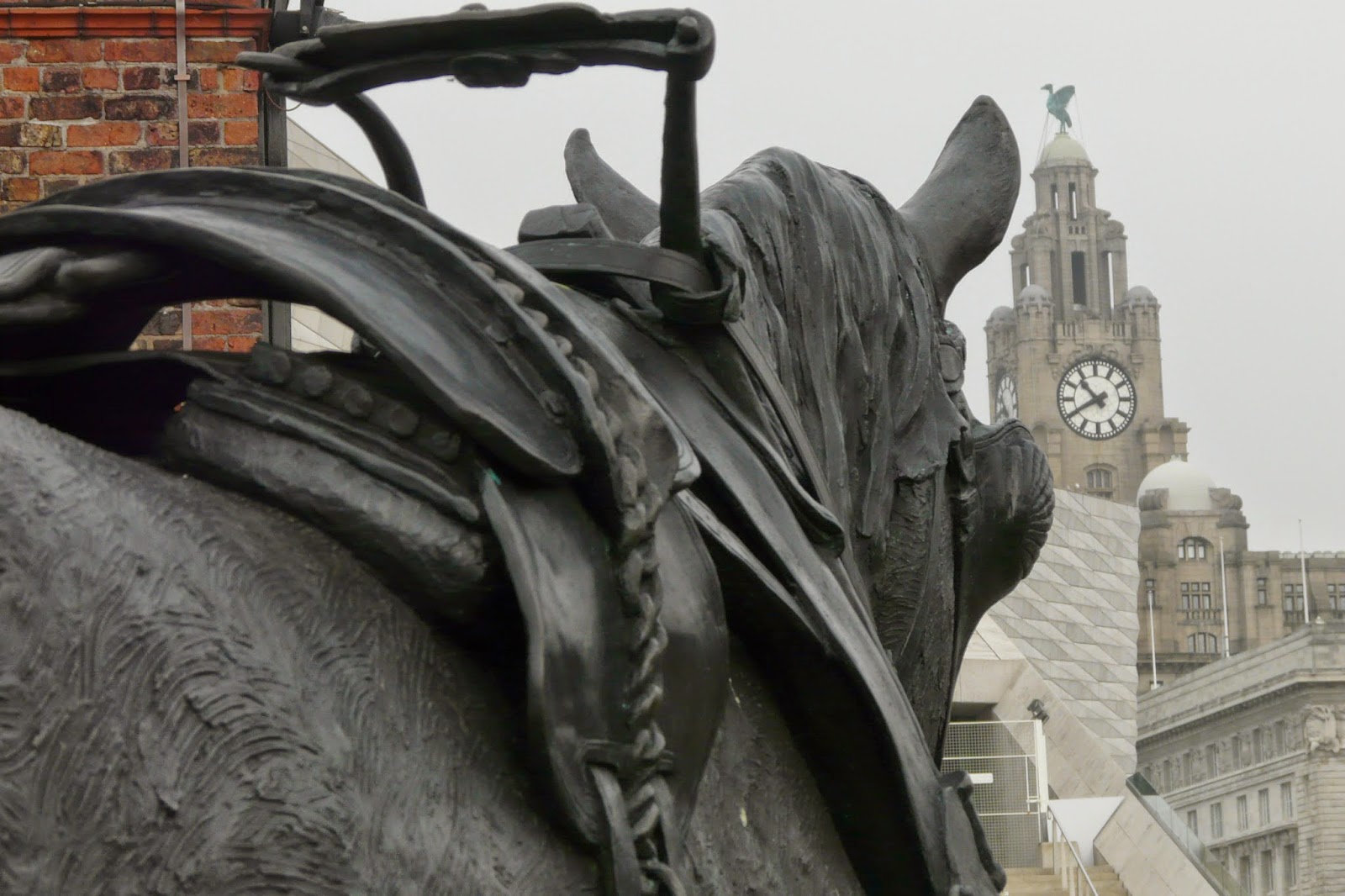In our world of fast cars, trucks and planes and trains we
tend to forget how the horse was once a vital part of the whole system of
commerce. By the late 1800s there were
over 3 million horses working in Britain.
This monument pays tribute to the working
horse and points out that at their peak more than 20,000 horses worked on the
streets of Liverpool.
The monument gives a taster of the loads these beasts of burden once carried:
Bags of seed, tea, groundnuts, cotton, rubber, dried fruit, rum, canned goods, rice, butter, tobacco, timber, billets, linen, saltfish, red oxide, yellow ochre, bales of dry/wet hides, carbon black, steel coils, steel girders (7 tons), casks of beer, milk powder, holloware, bodies, bundles of hessian, bags of Demerara sugar, and more…
For over 250 years there was an army of occupations depending upon the horses for their livelihood such as blacksmiths, farriers, ostlers, carters and wagon builders.
Imagine the sound, sight and smell of thousands of horses moving around these docks and streets - the clattering of metal hooves and wheels on stone, the neighing, hollering and cajoling, the whiffs of sweat, damp and pooh. The average horse would produce around 25 pounds of manure a day.
This delightful bronze statue was a result of the Retired
Carters Association who were concerned the history of the working horse would
be forgotten. The statue, by Judy Boyt, is called Waiting showing the obedience of these
powerful creatures. It was unveiled May 2010.
This monument is included in the FREE tour of Liverpool Pier Head available from www.obelisktours.co.uk





No comments:
Post a Comment